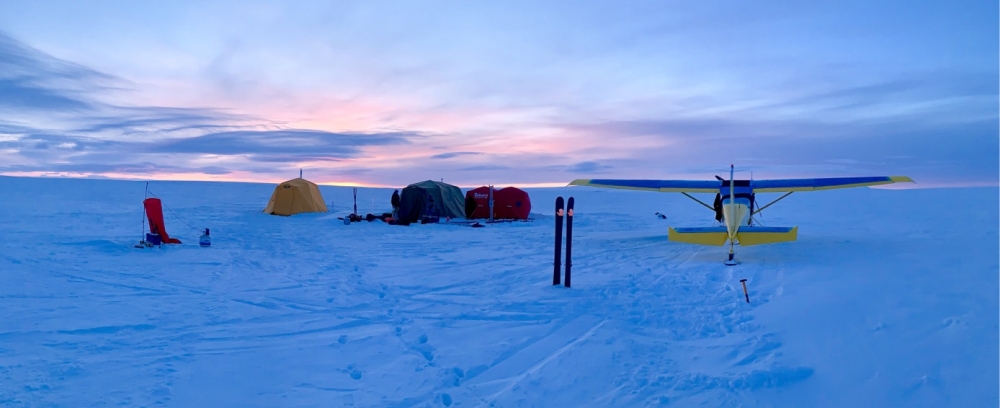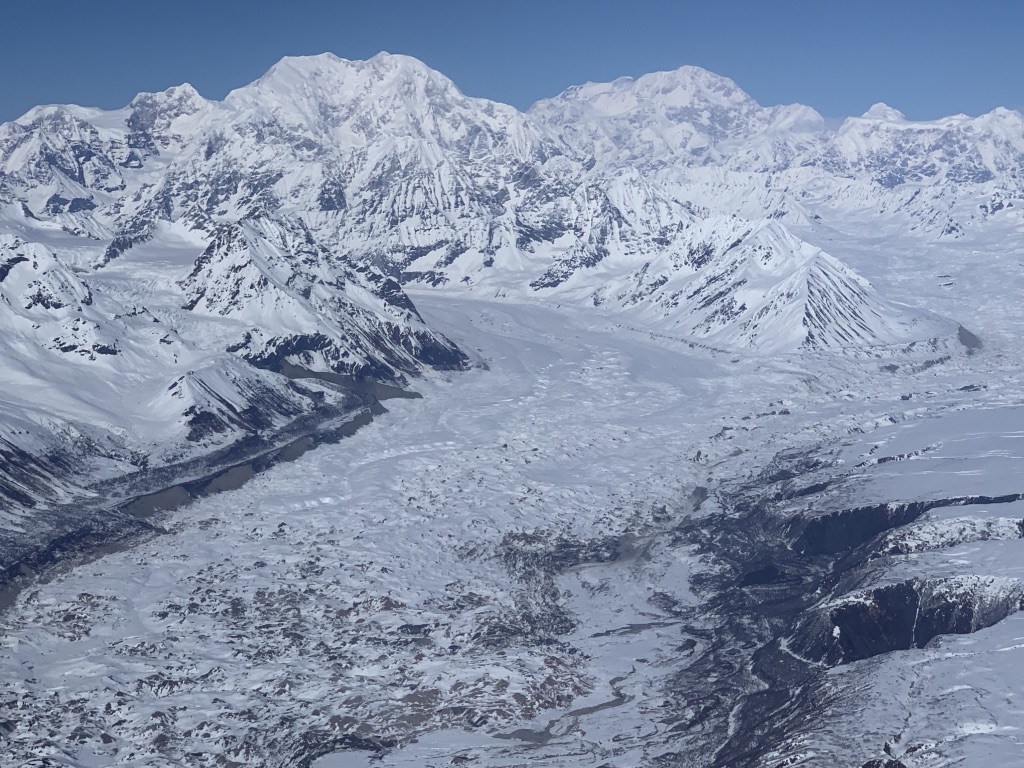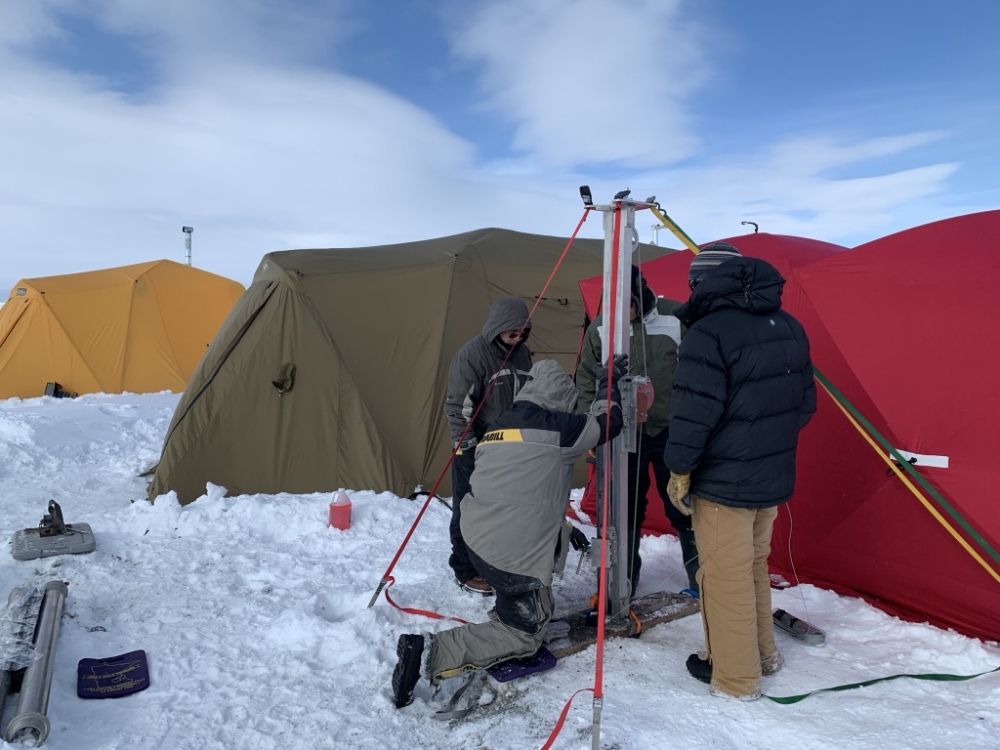Alaska and other high-latitude regions are of special interest to today's climate scientists. There, sea ice in the warmest months has decreased by two-thirds over the last 40 years, and temperatures are rising more than twice as fast as temperatures across the rest of the planet. But the methods scientists use to reproduce Earth's past climate are not always applicable in the Arctic environment.

One of these methods involves analyzing organic compounds called alkenones. Originally discovered in the 1970s, alkenones are ubiquitous in the ocean and are commonly used to reconstruct the temperature of the long geologic past; however, until recently, their utility was limited at high latitudes, where alkenones are either absent or too low in concentration for accurate measurements.
Moreover, in places like the Bering Strait, the terrain has existed as both land and ocean in accordance with sea level fluctuations during Earth's glacial–interglacial cycles, and so sediment is discontinuous.
As Huang explains, during the last glacial maximum, approximately 21,000 years ago, sea level was around 130 meters lower and Asia and North America were connected by a land bridge that was up to 1000 kilometers wide.

"Traditionally, people have used ocean sediment to study the past—but the ocean was not ocean in glacial times," he says. "This was a relatively important gap: a lack of good proxies or sedimentary archives with which you can measure the past temperature, in regions where climate change is having the greatest impact."
But in 2003, he and his team discovered a bizarre, new form of alkenone plentiful in certain Arctic freshwater lakes. These strange molecules differ significantly from the alkenones found in ocean and salty lakes, but genetic testing proves that they are produced by the same order of algae. And just like their more conventional counterparts, the structure of these "new" freshwater alkenones varies in accordance with temperature: as waters get warmer, the number of double bonds decreases. This makes them excellent geo-thermometers, natural tools for reconstructing temperature changes at high latitudes.
Previous field expeditions enabled Huang and his team to unearth sediments containing the freshwater alkenones from some younger lakes on the North Slope of Alaska. Now, with new funding from IBES and the National Geographic Society, they are once again traveling north—this time to Alaska's Seward Peninsula—to exhume sediments from the region's most ancient waters.
"These lakes are very unique," he says. "They provide us with past temperatures in the region when traditional ocean paleotemperature proxies don't work."
Surprises in sediment
During one of the team's previous excursions, Huang and his colleagues discovered something unexpected in the depths of Lake E5, a body of water whose sedimentary archive dates to the last glacial period—32,000 to 20,000 years ago.
"Initially, we were just in Alaska to study temperature changes using this new class of thermometers we developed," says Huang. "But when we looked at the glacial lake sediments from Lake E5, we found a lot of potential markers suggesting that humans might have been there for more than 30,000 years."
If confirmed, this will be a startling finding. Most existing archaeological and anthropological research suggests that modern humans colonized North America around 14,000 years ago, and were not previously present on the continent other than for possible occasional seasonal adventures.

"We found that the lake sediments contain a lot of fire markers, like charcoal and polycyclic aromatic hydrocarbons, which are produced by burning wood," says Huang. "However, frequent fires during the last glacial period don't make sense because these places belong to the Arctic tundra ecosystem, which is known to rarely burn now."
"Based on the current ecological theory, when it's colder, they will be even less likely to burn," he explains. "You don't have enough lightning to ignite fires, and a lower temperature will lower the lightning possibility as well."
The team also found biomarkers specific to human fecal material in the lake sediments.
And although there is no concrete anthropological evidence supporting human presence in Alaska during this earlier time, the idea is not completely without support. Indeed, genetic analysis suggests that the ancestors of modern Native Americans could have been present on the land bridge between Asia and North America for at least 10,000 years before making it to what is now mainland North America.
Could Huang's biomarkers could be the missing proof of this theory?
Taken together, the team's discoveries suggest major revisions to either the current ecological theory, or the current anthropological theory.
"Right now I have this evidence for fire in a really cold time. And it could be human," says Huang. "It could also be natural, if the ecological theory is wrong."
The team hopes that their next field expedition to Alaska will help clarify the relevance of the biomarkers they discovered two summers ago. Their new target lake contains a sedimentary archive that could be up to 200,000 years old—much older than the source of the team's previous discovery. Such an archive would include earlier glacial times, when scientists know there were no humans on the North American continent.
"Now I need to go to another time when it's also cold, but when there were definitively no humans," he explains. "If I also see a lot of fire at that time, then it means that the ecological theory is wrong, which is a very important contribution. If I don't see any fire at older times, I've demonstrated that the fire we found during the most recent glacial period was due to humans."
The past informs the future

Huang believes that this work is crucial for looking back, as well as for looking forward.
"From a pure science point of view, discovering a new geo-thermometer is very exciting," he says. "It's beginning to make a way for us to understand the climate in a region where, previously, there were no other ways to get temperature."
Furthermore, understanding historical shifts in climate can help scientists make sense of long-standing mysteries, such as the sudden disappearance of Vikings in the 14th century. Huang's research recently offered a climate-based explanation for this vanishing act: a temperature drop of 5 or 6 degrees over only about 10 years. Under such conditions, the Vikings, who farmed domestic animals rather than hunting seals, likely lost their steady food supply and could no longer survive.
But Huang's work has implications for studying the future of human populations too, as well as the future of all other ecosystems on Earth.
As he explains, unless scientists can train their models with thousands of highly accurate climate data points that cover many different places on Earth over many different timescales, simulations of future climate will continue to have significant uncertainties.
"In predicting the future," he says, "one of the best things to do is to learn from the past."
Over the last two decades, Huang says that he has learned a lot about the past—much of which he never bargained for.
"I would say that this particular project has really taught me a lot about how science advances," he says. "It started from one question and then evolved by itself."
"It's almost that I am dragged by it," he laughs, "rather than dragging it myself."